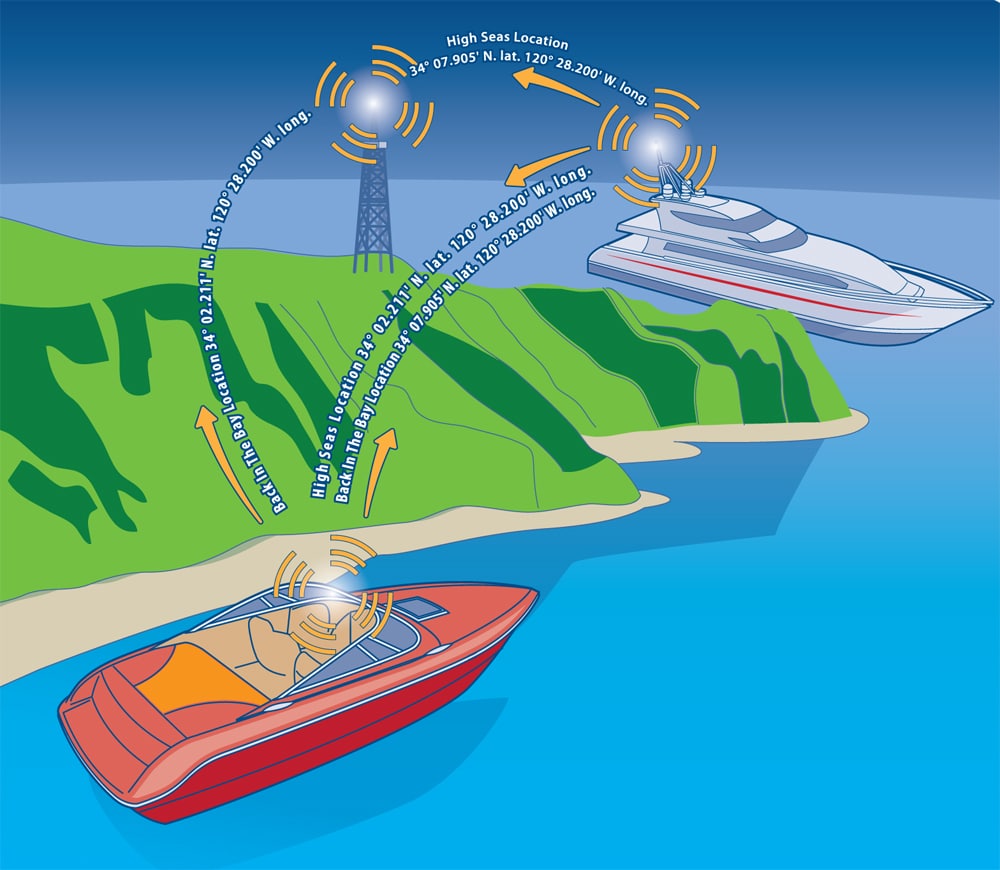
One cardinal safety rule all pilots follow is: See and be seen. AIS, the Automatic Identification System, similar to aviation transponder technology, provides the boater with the ability to do just that. With AIS you can quickly see and identify any vessel in your immediate area that is broadcasting an AIS signal. This information is visible even in dense fog or at night. Here’s a rundown on what it is and how to use it.
What is AIS?
AIS will place a triangular icon on the chart plotter’s screen that represents any vessel sending out AIS signals. This includes most commercial vessels, which are required by law to have it, as well as numerous recreational craft with owners who are discovering the safety benefits of AIS. Just place the chart plotter’s cursor on an AIS icon, and a list of valuable information unfolds. The ship’s name and radio call sign are shown. This means you can pick up a VHF and hail a specific vessel that may be posing a threat. Additional information includes the vessel’s length, beam and draft, its exact position, speed and heading, its rate of turn and even the calculated closest point of approach (CPA) and the time it will happen (TCPA). Commercial ships often also transmit vessel type, port of origin, destination and even the type of cargo, including hazardous materials.
Since AIS operates on VHF frequencies, it can receive this vital information even though you may not see the vessel, such as when nearing the entrance to a marina or crowded commercial harbor or when there is boat traffic behind a low hill, building or other structure. In this sense, AIS can see targets that radar cannot.
AIS Types
There are two types of AIS: Class A and B transponders and receive-only sets. Class A is commercial grade, Class B the cheaper recreational version. Both not only receive AIS data but also broadcast information about your boat. A Class B-equipped boat should appear on the plotting screens of all other AIS-equipped vessels within about five to 10 miles. However, as with radar, you should never assume that another vessel has seen you and will take action to avoid a collision. But even a receive-only AIS receiver can help by making it easier to call the other vessel by name.
AIS can be added to your boat in several ways. You may already have most of the equipment you need to enjoy AIS right now. Most recent multifunction GPS/chart plotter models, including those from Furuno, Garmin, Lowrance, Raymarine, Simrad, Si-Tex and Standard Horizon, accept an AIS add-on module, though an additional VHF antenna or antenna splitter is needed. Most multifunction display manufacturers offer AIS add-on modules with receivers starting at about $500 and transponders at $900. Aftermarket black box receivers start at about $200 and transponders at $500, and all AIS gear tends to work well with other electronics because they all use standard National Marine Electronics Association (NMEA) data protocols. AIS units are also built into VHF radios and also stand-alone Class B transponders that have their own plotting. In any format, AIS is a great way to see and be seen.
The U.S. Coast Guard is asking all boat owners and operators to help reduce fatalities, injuries, property damage, and associated healthcare costs related to recreational boating accidents by taking personal responsibility for their own safety and the safety of their passengers. Essential steps include: wearing a life jacket at all times and requiring passengers to do the same; never boating under the influence (BUI); successfully completing a boating safety course; and getting a Vessel Safety Check (VSC) annually from local U.S. Coast Guard Auxiliary, United States Power Squadrons(r), or your state boating agency’s Vessel Examiners. The U.S. Coast Guard reminds all boaters to “Boat Responsibly!” For more tips on boating safety, visit www.uscgboating.org.








